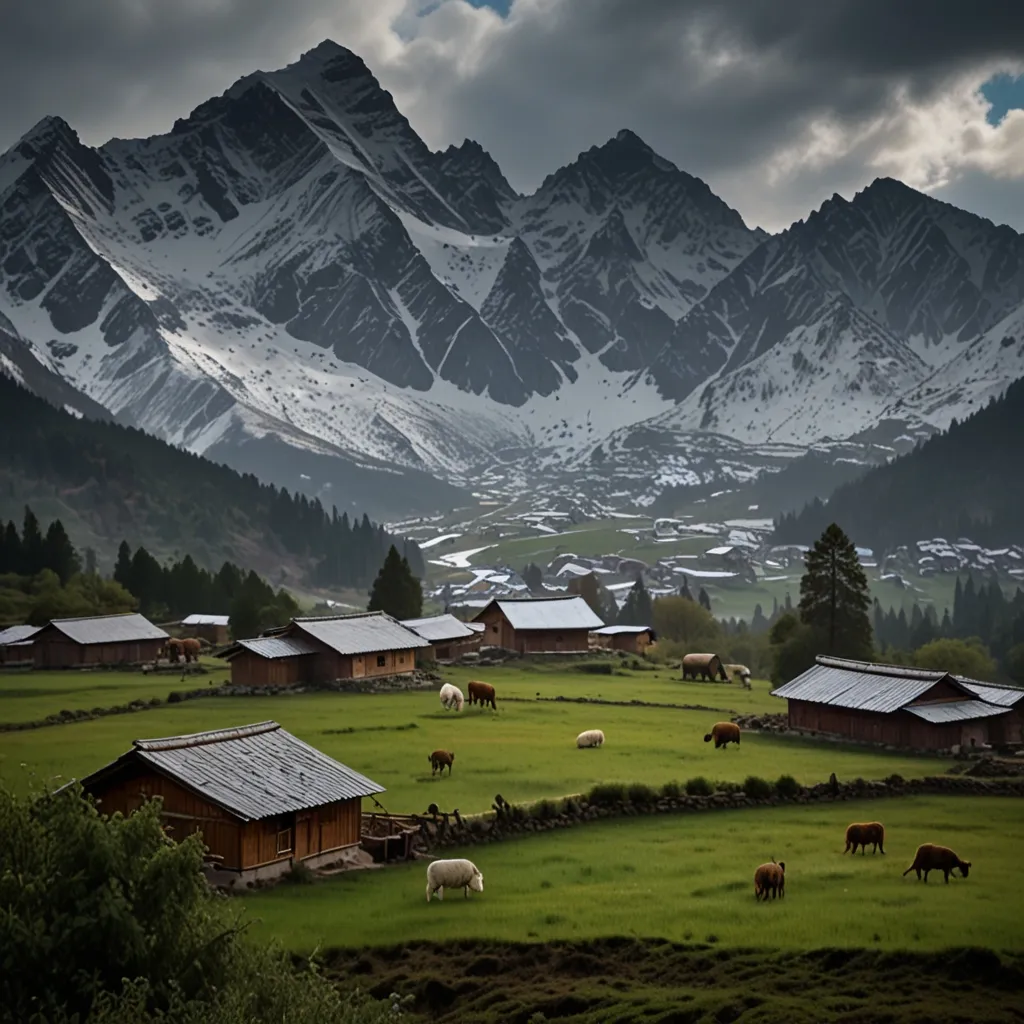Living in the rugged terrains where mountains touch the sky and dance with the clouds is a unique and humbling experience. Mountains are like nature’s ancient fortresses, harboring tales untold and lives intertwined with their majestic presence. From the gentle whisper of the wind weaving through the pine trees to the strength of communities that molded themselves around this formidable environment, mountain life is a saga of beauty balanced with challenges. Imagine waking up each day to a new dawn full of trials and going to bed with stories of endurance and harmony—a never-ending cycle that tells the story of resilience and courage in the face of adversity.
Long before the digital era brought us the buzz of city life and sprawling urban landscapes, humankind found solace and security in these towering giants. Mountains were originally sought for the shelter they provided and the strategic advantages they offered early humans—be it in defense against invaders or proximity to vital natural resources. Over generations, mountain communities have become testaments to human ingenuity and adaptability. From mastering the art of hunting the diverse wildlife to cultivating the mountainous and fecund slopes for agriculture, these communities have forged unique pathways to survival. Their legacy is painted across the landscapes in the form of ancient mountain civilizations that left behind breathtaking fortresses and temples. These marvels of architecture are not just feats of human endurance; they are a reflection of a profound connection with the rugged beauty surrounding them.
The echoes of mountains are felt deeply within the cultural fabrics of these areas. Spiritual ties to peaks and natural wonders infuse daily life, shaping agricultural practices designed to thrive at high altitudes. Trade routes meandering through high mountain passes became the lifeblood connecting insular communities with the outside world, ferrying goods, ideas, and cultural practices that enriched mountain life and intertwined it with the broader human narrative.
Living at these altitudes means continuous adaptation. Climate and geographical dynamics both play significant roles, sculpting life in constant tandem with nature. Higher altitudes define cooler climates—you see snow-capped peaks even during summer—and affect where people can settle, farm, and erect homes. Disease patterns, the migration of animals, and even human livelihoods have to adapt to these variations. Varied rain patterns depending on altitude give rise to diverse microecosystems, lush forests on one side of a mountain and drier spreads on another. Living in such an environment requires a harmony between man and nature, homes built to endure the cold and the wind, agriculture adapted with techniques like terracing to make steep slopes arable, and coping mechanisms to adjust to the ever-shifting weather conditions.
Mountain regions are home to immense biodiversity, where flora and fauna evolve distinctively due to the enclosing niche environments. The evocative shift in altitude, soil, and climate within even small areas leads to a tapestry of life that is fascinating. At lower levels, dense coniferous and deciduous forests give way to stunning alpine meadows, which further transform into barren, rocky terrains at the highest points. Mountain goats gracefully navigating steep, rocky inclines and snow leopards masked in white fur blend seamlessly with their backgrounds, each playing vital roles in preserving this fragile yet flourishing ecosystem. The interdependence found here is a testament to the complex natural systems at play and why preserving these ecosystems holds paramount importance.
Culture in the mountains is woven through every facet of life, intertwined with the environment and traditions. Rich tapestries of storytelling, vibrant music, and expressive dance are passed down as vital threads tying communities together, teaching lessons about the land, the weather, and native wildlife. Festivals burst to life marking agricultural events or natural phenomena, bringing communities together in vibrant displays of custom and tradition. Linguistic diversity adds another layer, with many regions preserving unique dialects, often distinct from national languages, enhancing the rich cultural mosaic that defines mountain life.
The economy of mountain regions is intricately aligned with the environment’s bounty. Agriculture remains pivotal, with crops like potatoes, barley, and maize thriving through terraced farming. Livestock such as goats, sheep, and yaks find sustenance and purpose, providing essential resources like milk, meat, and wool. Tourism too plays a crucial role, attracting adventurers drawn by the natural beauty and unique cultures, consequently supporting local economies through accommodations, guided tours, and handmade crafts.
Life in the mountains is not without its challenges, often necessitating creativity and resilience. Geographical isolation means that simple necessities like healthcare or education require arduous journeys. Weather extremes pose serious threats—winters trap communities in snow-imposed solitude, while summers might unleash landslides or flash floods. Despite these, mountain communities rise, crafting homes resilient to earthquakes and landslides and fostering community-led healthcare and education initiatives—progress forged from ancestral knowledge and community bonds.
The ripple of modern technology touches even these lofty heights, bridging physical divides, and ushering in new opportunities. Internet access, improving though sporadic, connects communities to wider global networks, enhancing education and allowing local enterprises to flourish in global marketplaces. Renewable energy innovations like solar panels and micro-hydro power plants deliver essential power, supporting local businesses and enhancing quality of life. Improved transportation infrastructure is opening doors—not only welcoming tourists but also enabling residents better access to urban services, thus reshaping mountain living in the modern age.
Yet, these ecosystems remain delicately balanced, threatened by rising global temperatures and unsustainable practices. Climate change brings unpredictable challenges, shrinking glaciers precipitating water shortages, and exposing communities to increased natural disasters. Efforts to preserve these fragile landscapes, like sustaining vegetation, embracing sustainable tourism, and restoring biodiversity, aim to ensure these mountainous treasures persist for future generations, continuing to nurture unique cultures and resilient ways of life.
The intertwining stories of mountains, a dance with survival, tradition, and modern living, echo the resilience and harmony found where the earth kisses the sky. As we strive to protect, understand, and cherish these monumental landscapes, let us commit to doing our part, ensuring that mountains continue to stand as timeless sentinels, narrating stories of human and nature’s intertwined existence.






